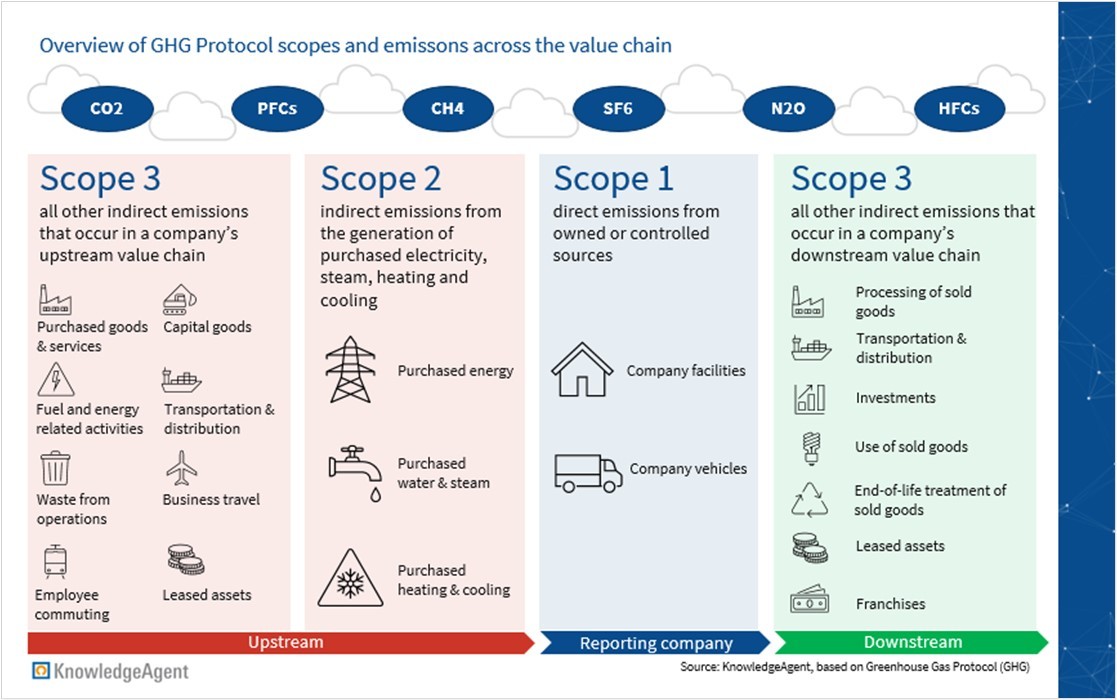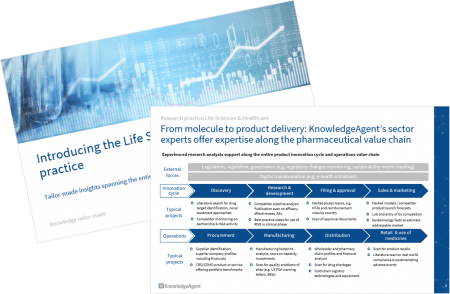The health care sector provides an essential societal function, but at the same time also is one of the most polluting industries worldwide. The sector is responsible for almost five percent of global carbon dioxide emissions. The majority of health care emissions ( >70%) are generated within the supply chain (Scope 1-3, see graph below) through the production, transport and disposal of goods and services purchased by health care facilities, such as pharmaceuticals, hospital equipment, instruments, and medical devices. In addition, the pharmaceutical industry is responsible for 300 million tons of plastic waste each year, of which 50% is single-use.
Single-use devices and the way towards a circular economy
Establishing a circular supply chain for single-use medical devices would make a significant contribution to reduce emissions from the health sector. One way to accomplish this is device recovery through high-level disinfection and sterilization - a method referred to as “reprocessing”. More and more emphasis is being placed on reducing emissions from health care. Thus, several major OEMs of single-use medical devices have extended their business to reprocessing services.
Recycling initiatives
Devices such as self-injection pens are a big help to patients suffering from chronic diseases. However, these auto-injectors are not very sustainable. Most auto-injectors are designed to be disposable or contain disposable components. Estimates show that 90% of medical device waste consists of single-use products or components. However, there are some early efforts to tackle this challenge. Diabetes player Novo Nordisk, for example, launched a program as part of their “Circular for Zero” strategy where patients can return empty pre-filled insulin pens that will be recycled by the company. According to the company, up to 85% of materials can be recycled into items such as chairs, lamps, or glassware. Initial results of the program in Denmark showed return rates of about 20%, and the pilot project is set for a roll-out to additional geographies.

Sustainable materials and manufacturing
Another strategy to reduce emissions is the use of faster degrading materials, materials from sustainable sources such as sugar cane or other resource and energy saving materials. The design process can be made more sustainable by using 3D visualization and printing technologies. They can help test innovative sizes, shapes, and functionalities in a controlled environment instead of traditional testing, which requires more resources. When it comes to packaging, a trend involves building key product features directly into primary and secondary packaging in the first place, instead of combining the features later on in the value chain. Implementation of digital solutions such as QR codes on bottles or containers allow patients to access important information such as product dosage in an efficient way, minimizing excess materials.
Pharmaceutical companies committing to sustainable development goals
International initiatives like the Paris Agreement and the UN Climate Change Conference have served as an impulse for pharmaceutical companies to define sustainability goals, and all top 20 (bio)pharmaceutical companies have thus set their own targets. Examples include goals to reduce carbon emissions, the purchase of electricity from renewable sources and reduction of water usage.
Safety vs. sustainability: the final battle for the industry
The healthcare sector today emits more than the automotive sector, and its emissions forecast is projected to triple by 2050 if sustainable measures are not implemented. While the majority of leading companies have set targets, the goals are often only focusing on scope 1 and 2 emissions, but the majority of emissions generated are scope 3 emissions. It remains a difficult balancing act for sector companies to protect product efficacy and patient safety amidst increasing stakeholder pressure to put sustainability at top of mind. To fully achieve the shift towards a more sustainable industry, cross-industry collaboration, and investment into R&D are needed.
How KnowledgeAgent can assist – from molecule to product delivery
KnowledgeAgent’s Life Sciences & Healthcare practice offers insights along the pharmaceutical and healthcare value chain and helps to keep an overview on all trends and changes in sustainability in the pharmaceutical, medical devices, and healthcare industries. Our team provides valuable client insights, for example:
- ESG commitment benchmarking and comparison on company level
- Innovation case studies and literature search
- Scan of novel, sustainable materials across industries (in cooperation with the expertise of KnowledgeAgent’s other sector teams, such as transport & logistics, chemicals)
- Cross-country comparison of sustainability implementations
- Regulatory frameworks for major regions (e.g. EMA, US FDA)
You can find more about our Team Life Sciences & Healthcare for download here. If you need support on questions regarding sustainability in the pharmaceutical industry, please get in touch.



